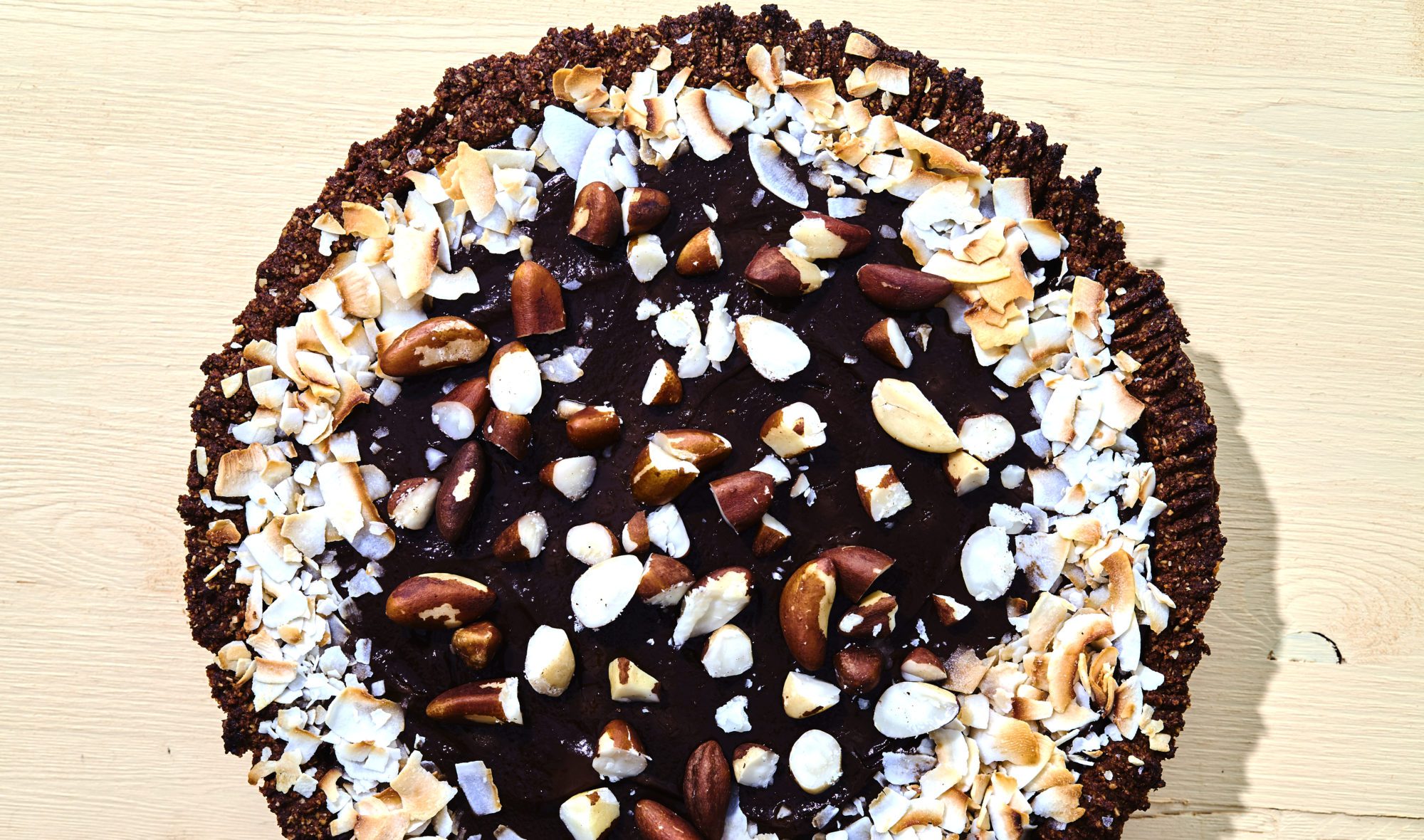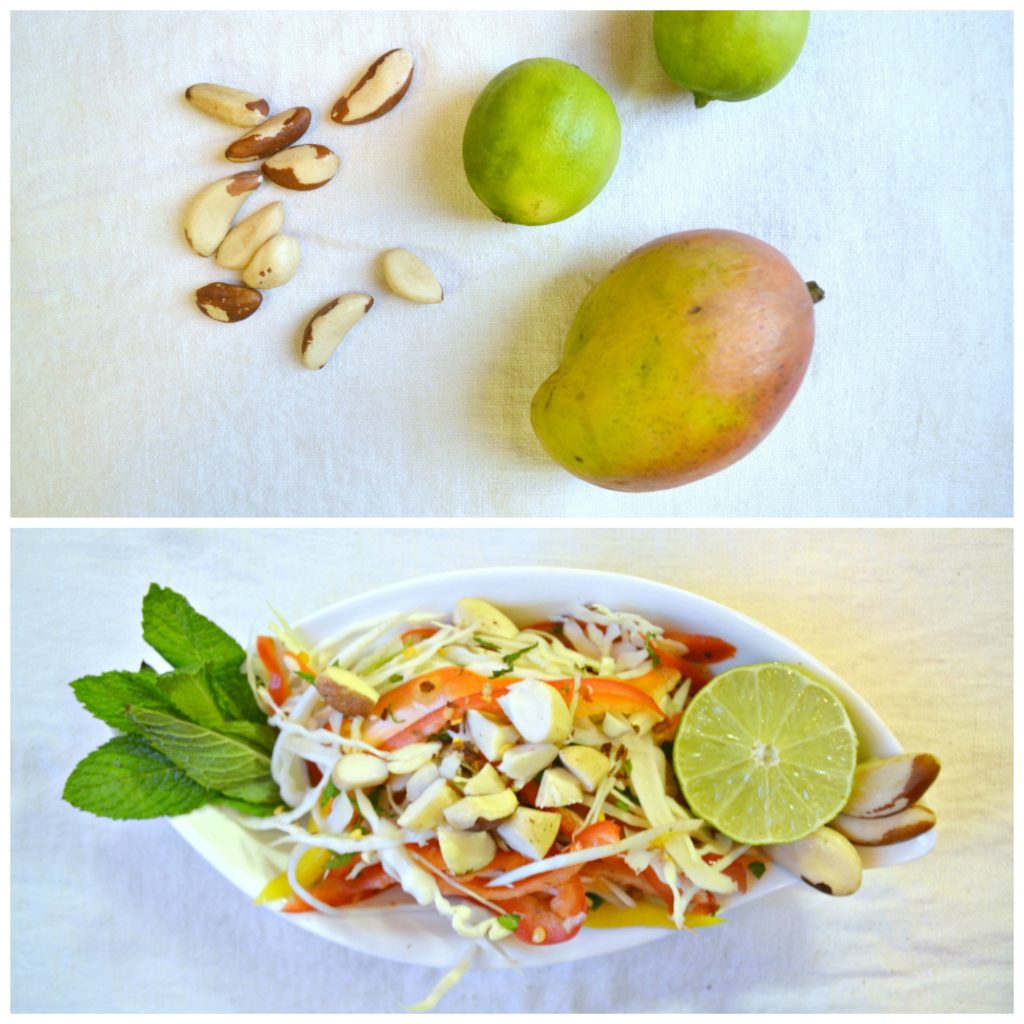
💥 Lowest price possible: on the Nutrition Coach Starter Package. Limited # left.

Brazil nuts are actually the seeds of a woody coconut-like fruit. These fruits are extremely heavy and when they ripen, they fall from towering trunks and threaten everyone below. It is not uncommon for Brazil nut collectors to suffer fatal blows. However, the nut inside is life-giving and nutritious. They are an extremely dense source of the mineral selenium, and only two Brazil nuts provide a therapeutic dose. Brazil nuts are also relatively rich in magnesium, phosphorus, vitamin B1, manganese, zinc, and vitamin E. Brazil nuts are almost always wild-harvested, as their survival and propagation depends on a network of organisms found only in the wild ecosystems of South America.
Hailing from verdant jungles on the banks of the Amazon river: a big nut.
Brazil nuts are actually the seeds of a fruit that looks much like a coconut. Inside the woody casing of the Brazil nut fruit, tough-shelled seeds are arranged much like the segments of an orange. When ripe, the bowling ball-like fruits fall to the ground, at which point they are collected.
But beware – Brazil nut collection has its perils! The combination of the weight of the hard fruit (about 4 lbs) and the height from which it falls (trees can reach up to 160 feet) makes for a dangerous, and potentially fatal, blow to an ill-placed victim.
Interestingly, the Brazil nut is the only internationally traded seed crop that is wild. Brazil nuts are typically grown in the wild (rather than farmed), because their survival depends on a few specific species of bees capable of pollinating the tree’s flowers. And the survival of the bees depends on the presence of a specific orchid. Further, most new Brazil nut trees are planted by the rodents that favor Brazil nuts as part of their diet. After consuming their share of nuts, they bury the rest in the ground for later use. Years later, forgotten food stashes turn into Brazil nut trees.
This is an ecosystem in action, folks.
The Brazil nut is native to South America. The world’s current prime producer of Brazil nuts is Bolivia, followed closely by Brazil.
In their hard shell, Brazil nuts look impenetrable and nearly prehistoric, like a fossilized animal dropping or an elephant toenail. The textured shells are deep brown and have three ridged edges.
Crack the nut open, and you will discover a large, smooth, oblong nut (technically a seed). The nut is ivory-colored and typically has large patches of a thin, reddish-brown skin, which is edible. Brazil nuts taste slightly sweet and oily, with subtle notes of earth, and a good crunch.
One ounce of Brazil nuts (about 6 kernels) has 187 calories, 4.1g of protein, 19.0g of fat, 3.3g of carbohydrates, 2.1g of fiber, and 0.7g of sugar. Brazil nuts are an excellent source of selenium, magnesium, and phosphorus, and are a good source of vitamin B1, manganese, zinc, and vitamin E.
Note that even a small amount of Brazil nuts make for a therapeutic dose of selenium: Two nuts contain approximately 100 micrograms of selenomethionine, a highly absorbable form of selenium. However, selenium toxicity is possible so it is best not to exceed consuming 6-8 nuts per day for long periods of time.
Brazil nuts can be found in most good grocery stores, health food stores, or bulk food stores, in a variety of forms: shelled or unshelled; dry/oil roasted or raw; salted or unsalted. Rarely, you may find them covered in chocolate or ground into a nut butter.
Your best option in terms of freshness and nutrition are unsalted, raw Brazil nuts, either shelled or unshelled. Shop at stores with high product turnover and, in the case of bulk food stores, covered bins.
If buying unshelled nuts, choose nuts that look plump and pale. Shriveling and yellowing are signs of old age.
If buying shelled nuts, choose nuts that have even, deep brown shells and that don’t rattle when shaken – this is a sign of a fully formed nut. Shelled nuts are more seasonal than unshelled nuts and are typically found only around the time of the Brazil nut harvest, in late fall/early winter.
Because of their high oil content, Brazil nuts are prone to rancidity. If you can, ask to sample the product. If the nut tastes bitter or moldy, or smells musty, take a pass. Bonus points if the store keeps them in the fridge.
Unshelled Brazil nuts should be kept in the fridge or freezer in an airtight container, where they will last one to two months.
Shelled Brazil nuts can be kept in the fridge, freezer, or in a cool, dry, dark cupboard, where they will keep four to six months.
Brazil nuts, once removed from their shell, can be eaten as is, or chopped up to top over salad or cooked porridges.
If you have purchased shelled nuts, use a nutcracker to crack them open. Unless you are the Hulk, in which case you can use your hands. Or if you are very skilled at psychokinesis, in which case you can use your mind.

This salad is full of fresh and zingy flavors, with a satisfying crunch from brazil nuts. Serve this as a refreshing side salad, or top with shrimp or grilled tofu to make this a complete meal.
Prep Time: 15 minutes Cook Time: 0 minutes Yield: 2-4 servings
For the Salad:
Once you’ve prepared all your ingredients, add them all to a large bowl and toss to combine. Then, prepare your dressing.
*If you have a mandolin, this is the perfect tool for getting paper-thin slices. If you don’t, just use a very sharp knife.
For the Dressing:
Add all ingredients to a small bowl and whisk to combine. Pour over the salad and toss until all the ingredients are coated. Serve immediately.
Precision Nutrition’s Encyclopedia of Food expands every single month as we highlight new foods and showcase beautiful food photography. If you’d like to stay up to date, simply click this link. From there, we’ll send you a FREE copy of our recipe book. We’ll also let you know when new and delicious foods are added to the site.
Brazil nuts are actually the seeds of a woody coconut-like fruit. These fruits are extremely heavy and when they ripen, they fall from towering trunks and threaten everyone below. It is not uncommon for Brazil nut collectors to suffer fatal blows. However, the nut inside is life-giving and nutritious. They are an extremely dense source of the mineral selenium, and only two Brazil nuts provide a therapeutic dose. Brazil nuts are also relatively rich in magnesium, phosphorus, vitamin B1, manganese, zinc, and vitamin E. Brazil nuts are almost always wild-harvested, as their survival and propagation depends on a network of organisms found only in the wild ecosystems of South America.